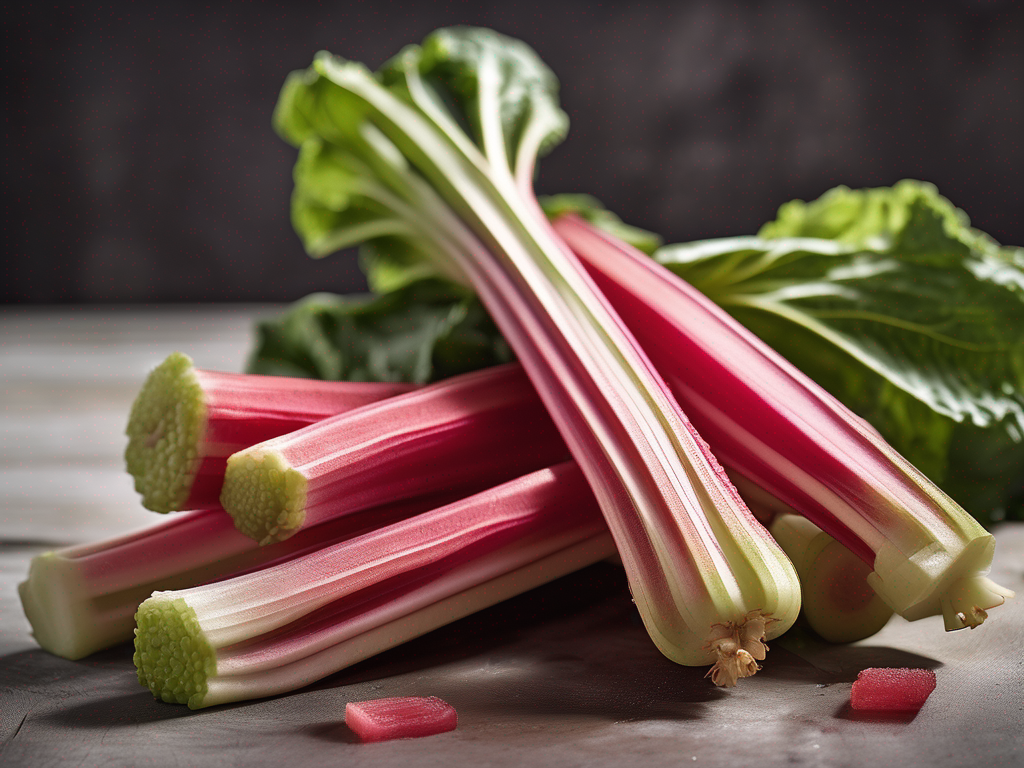
How to Properly Store Garden Rhubarb to Prevent Spoilage
Get Your Free Food Safety Cheat Sheet
30 most common foods with instant answers. Print it and stick it on your fridge—completely free!
How to Properly Store Garden Rhubarb to Prevent Spoilage
Garden rhubarb is a versatile and tangy vegetable that is a favorite in many dishes, from pies to jams and sauces. To enjoy the full flavor and nutritional benefits of garden rhubarb, proper storage is essential. Improper storage can lead to spoilage and waste. In this blog post, we will discuss how to store garden rhubarb correctly to extend its shelf life and maintain its quality. (Garden rhubarb)
Understanding Garden Rhubarb
Before diving into storage tips, let's briefly explore garden rhubarb and its characteristics:
- Garden Rhubarb Basics: Garden rhubarb, also known as Rheum rhabarbarum, is a perennial vegetable with thick, edible stalks and large, heart-shaped leaves.
- Nutritional Value: Rhubarb is a good source of vitamins K and C, as well as fiber and antioxidants.
- Harvesting Season: Rhubarb is typically harvested in the spring and early summer months when the stalks are firm and colorful.
Now that we have an understanding of garden rhubarb let's move on to the storage guidelines.
Proper Storage Techniques for Garden Rhubarb
1. Harvesting Garden Rhubarb
- Harvest rhubarb stalks by gently pulling and twisting them from the plant. Avoid cutting the stalks to prevent damage and reduce moisture loss.
- Choose stalks that are firm, crisp, and brightly colored. Avoid stalks that are wilted or have soft spots.
2. Cleaning and Preparing Garden Rhubarb
- Rinse the rhubarb stalks under cold water to remove any dirt or debris.
- Trim the ends of the stalks and remove any leaves, as they are toxic and should not be consumed.
3. Refrigerating Garden Rhubarb
- Wrap the cleaned and trimmed rhubarb stalks in a damp paper towel to help retain moisture.
- Place the wrapped stalks in a perforated plastic bag or airtight container to prevent them from drying out.
- Store the rhubarb in the crisper drawer of the refrigerator at a temperature of around 32-40°F (0-4°C) for optimal freshness.
4. Freezing Garden Rhubarb
- If you have an abundance of garden rhubarb, consider freezing it for long-term storage.
- Wash, trim, and cut the rhubarb into pieces of your desired size.
- Blanch the rhubarb pieces in boiling water for 1-2 minutes, then transfer them to an ice bath to stop the cooking process.
- Drain the blanched rhubarb and pack it into airtight freezer bags or containers, removing excess air before sealing.
- Label the containers with the date and store them in the freezer for up to 12 months.
Safety Precautions and Tips
- Avoid Eating Rhubarb Leaves: Rhubarb leaves contain oxalic acid, which is toxic to humans and pets. Only consume the stalks of garden rhubarb.
- Check for Mold and Spoilage: Before using garden rhhubarb, inspect it for any signs of mold, sliminess, or off odors. Discard any spoiled pieces.
- Use Fresh Garden Rhubarb Promptly: For the best flavor and texture, try to use garden rhubarb within a few days of harvest or purchase.
Conclusion
By following these proper storage techniques and safety precautions, you can enjoy the fresh and tangy taste of garden rhubarb for longer periods. Whether you choose to refrigerate or freeze your rhubarb, taking the time to store it correctly will help prevent spoilage and waste. Experiment with different preservation methods to find the one that works best for your cooking needs. Happy gardening and cooking with garden rhubarb!
For more information on garden rhubarb, visit our main food page. (Garden rhubarb)
Authoritative Food Safety References
These agencies and university labs inform every tip and health precaution we publish.
USDA FoodKeeper – Cold Storage Guidelines
Official refrigerator, freezer, and pantry timelines maintained by the U.S. Department of Agriculture.
Visit USDA FoodKeeperFDA Produce Safety Rule & Grower Guidance
Field-to-fridge handling practices that prevent contamination of fruits, vegetables, and leafy greens.
Visit FDA Produce SafetyCDC Foodborne Illness Prevention Hub
Surveillance-backed guidance on pathogens, symptoms, and steps to reduce foodborne illness risk.
Visit CDC Food SafetyUC Davis Postharvest Technology Center
University research detailing optimal storage atmospheres for produce after harvest.
Visit UC Davis PostharvestPenn State Extension – Home Food Preservation & Safety
Peer-reviewed extension bulletins on safe canning, chilling, and reheating practices.
Visit Penn State ExtensionGet Your Free Food Safety Cheat Sheet
30 most common foods with instant answers. Print it and stick it on your fridge—completely free! Want more? Upgrade to the complete guide with 70+ foods.
Scan your food directly and get instant safety info using our AI-powered camera feature.